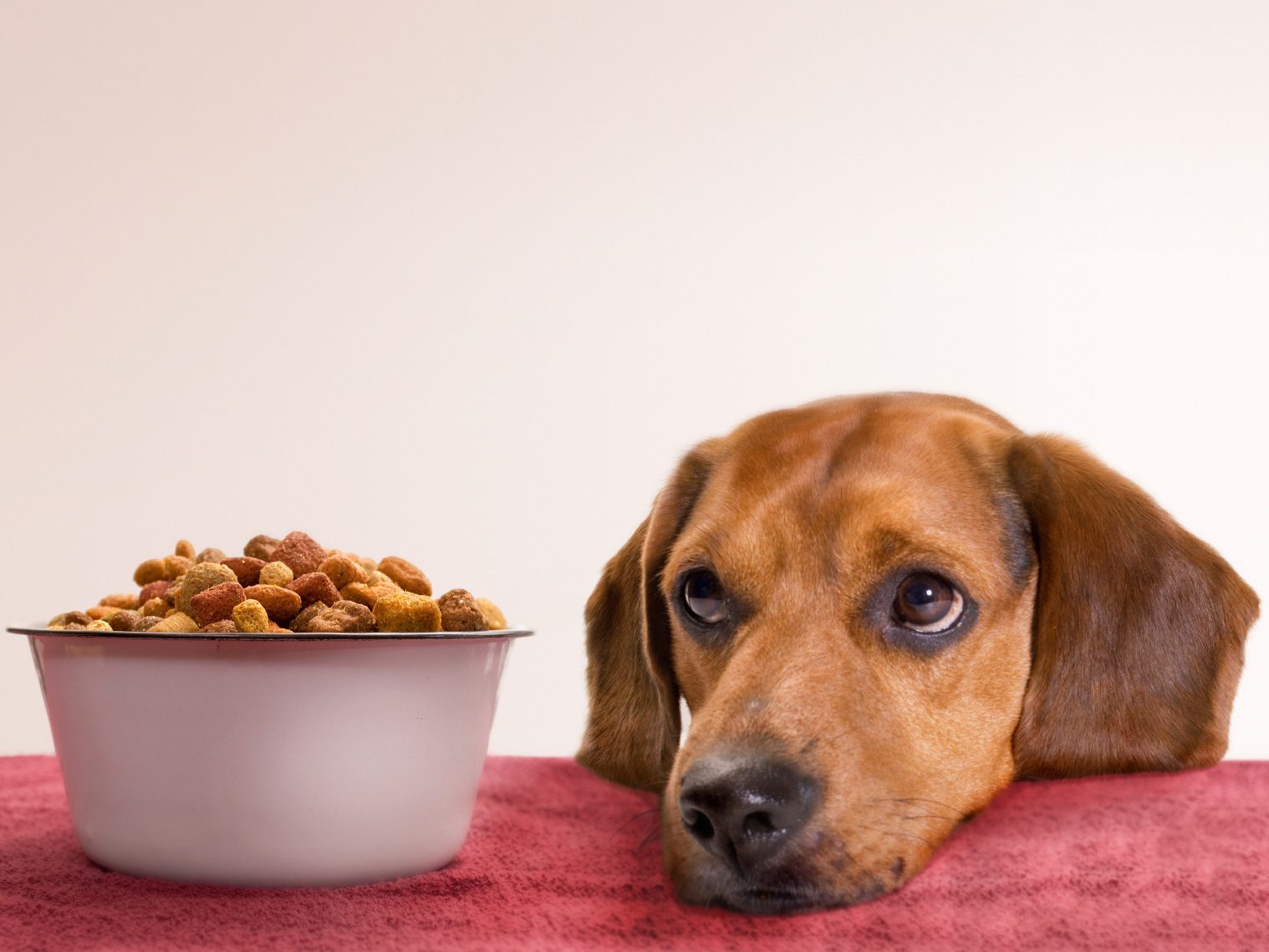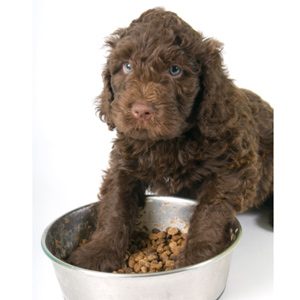
Choose the Right Size and Style
The dish should be big enough to accommodate your dog’s regular meal without spilling over, but the depth depends on Sparky’s snout.
Deep dishes are fine for dogs with long snouts but shallow dishes work best for puppies as well as short-snounted breeds like Pugs and Bulldogs. Many puppies eat with unbridled gusto and, if the dish is too deep, they may choke while snarfing up those tasty bits at the bottom. Short-snouted dogs don’t have a lot of room between mouth and nose so they’re at risk of inhaling food when it piles up at the sides and bottom of a deep dish.
If your dog has long ears that tend to drag lazily through his food, look for an elongated dish that allows the ears to flop neatly on the outside. Otherwise, round bowls are best for most dogs.
Plastic, ceramic, or stainless steel?
Plastic and ceramic are often the least expensive options and they come in a great variety of colours and graphics. Ceramic is heaviest which means it can’t be pushed around the kitchen by an enthusiastic four-legged diner. The drawback with both ceramic and plastic is that they’re easily scratched or chipped which can lead to bacteria entering the crevices.
Stainless steel is often the most expensive option but it’s also the most durable and easiest to clean and sanitize. If heft is important, choose a stainless steel dish with a weighted and skid-proof bottom.
What other types of dishes are available?
▪ Portable water and food dishes are perfect for travel. Usually made of heavy canvas with waterproof liner, these nifty dishes collapse to fit under a car seat or in knapsack.
▪ Dogs who gobble food too quickly (which can cause digestive upset) can be helped with “slow-feeding” dishes. These include raised partitions or domes that create obstructions. The idea is that the dog will slow down because he’ll need to work harder at extracting every last morsel.
▪ Dogs who fling food and water from their dishes are perfect candidates for a new product called “neater feeder” which works as a splash guard. Dishes are placed in the neater feeder which stops flying food and water from landing on floors, cabinets, and the human’s shoes.

What Else Should Be Considered?
Long-legged, heavy, senior, or arthritic dogs
These dogs may find it difficult or painful to crouch down or bend their necks to reach dishes placed at floor level. Elevated feeding platforms are available at pet supply stores or do-it-yourself with a sturdy cardboard box. The idea is to elevate food and water dishes to the level of the dog’s lower chest. This reduces strain on joints and muscles, and aids in digestion as food and water takes a less stressful route to the stomach.
What about self-feeders?
A self-feeder is a kibble dispensing machine that includes a food dish. It’s not the best choice for dogs who eat as much as possible at one sitting but programmable models are available that dispense food at specific times of the day. It’s a boon to people with erratic schedules.
Continuous Flow Water Dishes
Dogs need fresh, clean drinking water available at all times and self-serve water dispensers deliver the goods directly to the built-in dish using a sensor to determine when the dish needs to be replenished.
Dog dishes and accessories come in all shapes, sizes, and colours. Bonus: you’ll probably find something perfectly suited to your décor! Choose the best products based on your dog’s individual needs and re-evaluate your choice when his requirements change as he gets older.